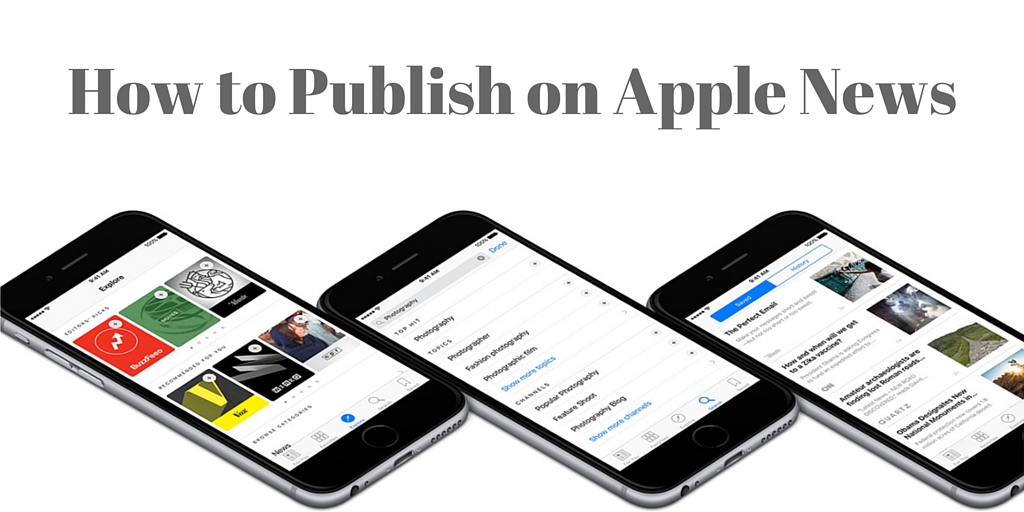
by Fronetics | Jul 25, 2016 | Blog, Content Marketing, Logistics, Marketing, Strategy, Supply Chain

Get your news in front of the one billion iOS users with this step-by-step guide to publishing on Apple News.
Do you use Apple News? If you have an iOS device (iPhone, iPad, or iPod Touch) and have upgraded to iOS 9 or beyond, the app is preinstalled.
Users love the easy-to-read interface and the fact that they don’t have to download a number of different third-party news apps. That’s because Apple News aggregates content from various media outlets, from the New York Times to local blogs, based on user preferences. You can refine what news you see by choosing your preferred publications and topics, which are as general as politics or as specific as the Chinese economy.
There are a number of topics and channels relevant to the supply chain. From supply chain management and automotive logistics to packaging news and sustainable brands, Apple News is an excellent source of content for companies in the industry.
Here’s more good news: Anyone can publish on Apple News. That means your business can distribute your content through this platform with the chance to reach the more-than-one-billion iOS users around the globe.
Signing up as a publisher is simple. Here are four easy steps to get started.
1) Sign into iCloud.
Go to https://www.icloud.com/#newspublisher and enter your iCloud login details. You can quickly create a free account if you don’t have one already. Click “Continue.” Note that you’ll need to agree to the End User License Agreement.
2) Set up your channel.
Complete details about your publisher name, contact info, and channel name. As a publisher, you can have multiple channels, each representing a different publication (such as a blog and a newsletter). After set up is complete, you can add a new channel by clicking “Create New Channel” and entering publisher and channel info.
Channel content is divided into sections. Your default section will contain the main content of your channel, but you can have up to 25 other sections to organize your content by topic or type. Apple suggests that 6 to 8 sections is optimal.
3) Upload your logo.
Upload a PNG file (smaller than 2 MB) of your logo that will be used throughout News to identify your content.
4) Select a publishing format.
You must choose between RSS feed or Apple News Format, which optimizes your content for iOS devices. Other benefits of Apple News Format include the ability to create articles in Publisher, add team members, get analytics, and earn revenue through iAd.
Once you submit all of this information, Apple will review your information and get back to you before your channel launches officially.
Learn more about publishing on Apple News.
Related posts:
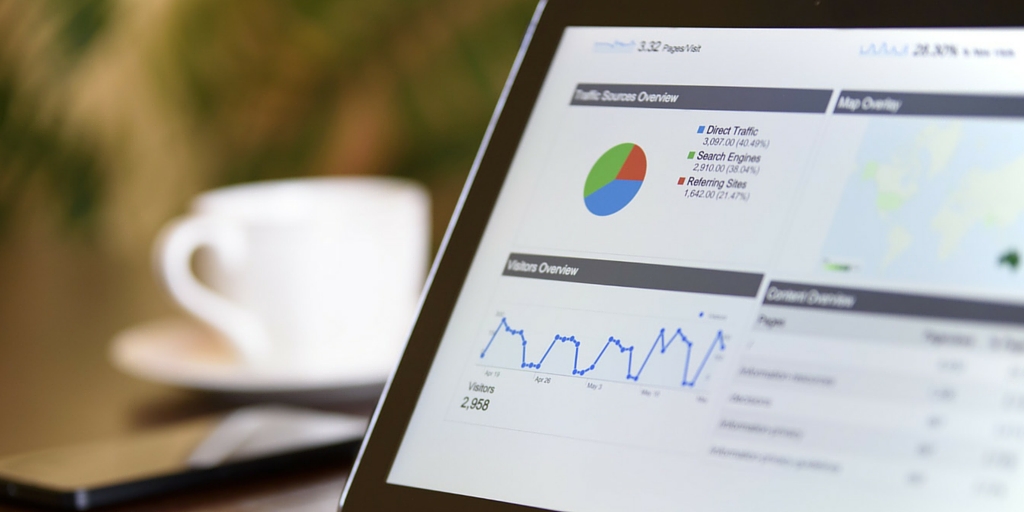
by Fronetics | Jul 20, 2016 | Blog, Content Marketing, Marketing, Strategy
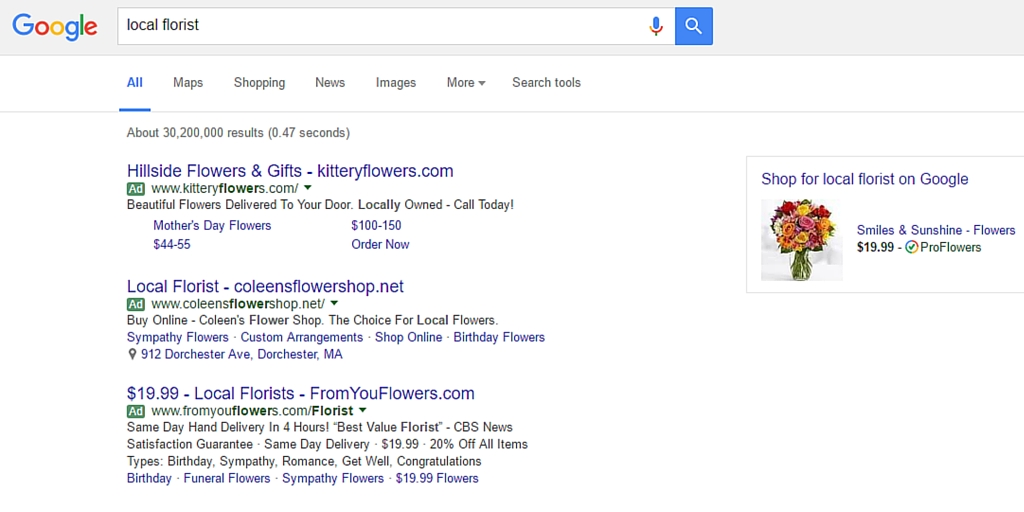
AdWords’ upcoming updates will make it easier for local companies to earn the top spot on local search, which can drive significant new business.
Google AdWords has made it easier for local businesses to get their names in front of people searching for products and services like theirs. The update involves changes to the so-called “3-pack,” or the listing of three related local businesses on a search results page. It’s also known as the local pack.
Let me explain: When you use Google to search for a product, service, or provider, a map appears in your search results overlaid with three nearby businesses related to your search query. For example, I searched for a “granite provider,” and got the following results:
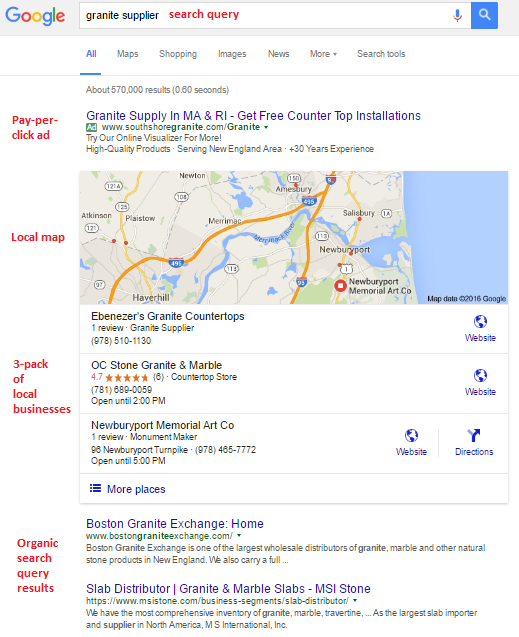
There is a pay-per-click ad above the map, followed by three organic listings (the 3-pack), and then the organic results of the search query.
Many consumers rely on the 3-pack to discover businesses in their area that offer the products and services they are seeking. And businesses get the benefit of many additional leads and customers when they appear in the 3-pack. This can be particularly significant for small businesses.
Moz conducted an thought-provoking experiment last August (when Google reduced the number of businesses listed below the map from seven to three). Users were instructed to conduct a search query, and Moz tracked where they clicked. The results were as follows:
- 44% clicked on a local businesses listed in the 3-pack
- 19% clicked on one of the pay-per-click ads above the map
- 29% clicked on an organic result below the 3-pack
While the experiment isn’t totally representative of users who are searching for local providers — given they were provided a search query — it does suggest that users are more likely to click through to businesses appearing in the 3-pack than elsewhere.
How can I get my business in the 3-pack?
Here’s where things get really interesting.
Currently, businesses who are aware of this phenomenon compete for these three coveted spots by spending lots of time, money, and effort optimizing their pages and outside factors (such as listings in local directories) to improve their chances of ranking in the 3-pack. Needless to say, small businesses with limited resources and know-how — those that could benefit most from appearing in the 3-pack — rarely have the opportunity.
But this is about to change. Google has been hinting at plans to include ads in the 3-pack. At a recent marketing expo, an executive confirmed that the team had been testing different variations of a reinvented 3-pack. He explicitly mentioned both one ad/two organic local listings and one ad/three organic local listings but noted testing was still underway.
Either way, businesses advertising in AdWords will soon have the opportunity to appear as the first listing in the 3-pack. The requirements are very simple. A business must:
- Link a Google My Business account to an AdWords account
- Add a local search extension
Google has not released the official roll-out date or other details, but one thing is certain: It is more crucial than ever for small businesses to utilize AdWords to drive new business. The reinvented 3-pack has major potential for local companies, and the reasonable cost of AdWords campaigns makes it a no-brainer, especially for small businesses with limited time and expertise for search marketing campaigns.
Related posts:
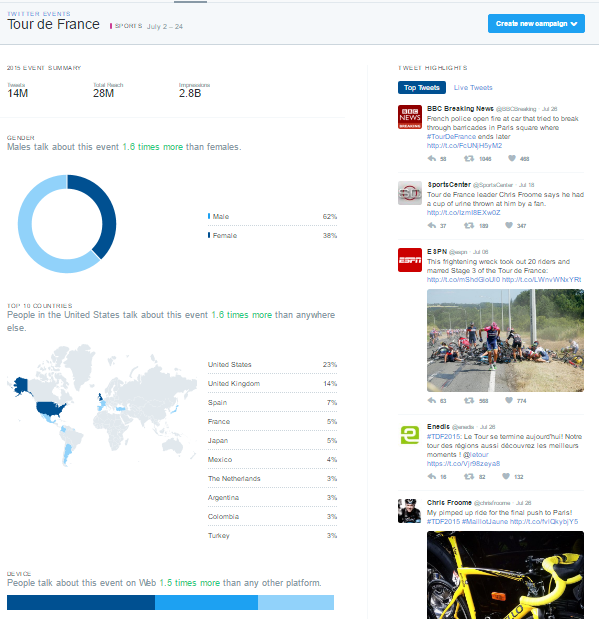
by Fronetics | Jul 19, 2016 | Blog, Content Marketing, Data/Analytics, Marketing, Social Media

This is part three of a three-part series on Twitter for B2B. See part one, Twitter for B2B, and part two, Tweet This: 20 Ideas for Twitter Content for the Supply Chain.
Leverage insights from Twitter’s analytics dashboard to improve audience engagement, reach, and content development.
Twitter is among the most popular social media platforms for companies in the logistics and supply chain industries. In fact, 95% report that Twitter is somewhat or very impactful on business. Yet 81% say that information on tracking and measuring ROI would be helpful to their business’ use of social media.
Fortunately, Twitter offers users a free tool that details how your tweets are performing and what your audience is interested in. In fact, Twitter Analytics can help you better understand your followers and refine your Twitter strategy to increase your engagement.
Here are the basic features of Twitter Analytics that you need to know.
Account home
Your account homepage offers a high-level overview of your Twitter activity in the last 28 days as compared to the previous period. This dashboard also provides information about your activity in the current month, including:
- Total tweets, impressions, profile visits, new followers, and mentions
- Your top follower, who has the most reach in your network each month
- Which tweet mentioning your name (“mention”) had the most engagement
Scroll down to see the same details for previous months.
Tweet activity
This dashboard provides metrics for each tweet in the last 28 days. You can see impressions, engagement, and engagement rate by tweet. Click on an individual tweet to get the details on engagement broken down by likes, link clicks, retweets, or replies. You can also see the day-by-day breakdown of total lkes, link clicks, retweets, and replies.
Audience insights
This is one of the most useful dashboards for insight on your followers, their behaviors, and interests. Smart marketers can use this information to better understand the kinds of content that resonates best with their audience.
The dashboard is broken down into 5 tabs:
1) Overview
See how your audience has grown over time, as well as gender breakdown, household income and net worth. Other features include:
- Interests (e.g., technology, politics, financial news, etc.)
- Consumer buying style (e.g., premium brands, gluten-free, healthy living, etc.)
- Wireless carrier
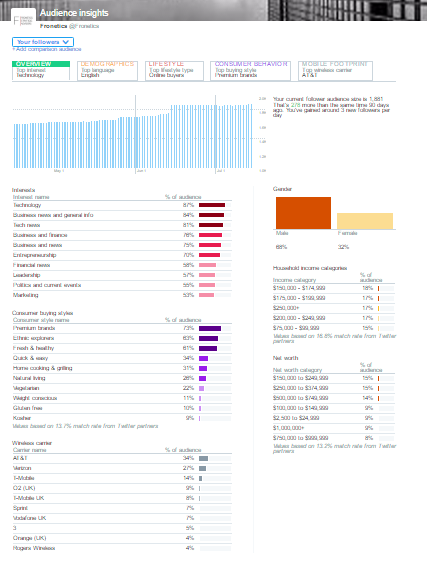
2) Audience demographics
This tab tell you about:
- Gender
- Country and region
- Language
- Household income, net worth, and home value
3) Lifestyle
Get insight into your followers regarding:
4) Consumer behavior
Learn about your followers’ buying styles:
- Aftermarket auto buyer type (including the last time they purchased a vehicle)
- Consumer buying style
- Consumer goods purchases
5) Mobile footprint
Discover information about your followers’ mobile behaviors:
- Wireless carrier
- Device categories (device type) and mobile/desktop breakdown
In addition to seeing this information for your followers, you can also filter by organic audience and the entire Twitter community to compare.
Events
Events gives you insights into how the Twitter community is discussing certain events or trends, like the Republican National Convention, Tour de France, Independence Day: Resurgence, or Throwback Thursday. Click on an event to learn about the audience that’s engaging in conversation about that topic.

Videos
The videos dashboard collects metrics on your video content. In addition to views, learn how long users are watching your videos and where users stop watching.
Twitter cards
Twitter cards allow you to include rich media in your tweets, and this dashboard helps you track how that content is being shared. You can view the following features:
- Snapshot: An overview of how your content is performing on Twitter
- Change over time
- Sources: The most popular platforms from which users send tweets linking to your content (e.g., TweetDeck, Twitter for iPhone)
- Best practices: Personalized tips for improving your content’s performance
Campaign dashboard
If you are using Twitter Ads, the campaign dashboard allows you to track the results of your ad campaigns. Check how your ads are performing in terms of:
- Impressions: This is how many times your ads have been seen by Twitter users.
- Results: These are the actions that are tied to your objectives. For example, if your goal is website visits, the results tracked will be link clicks.
- Engagement rate: This is the number of impressions for your ads, divided by the number of results.
- Cost per result: This is how much you’re paying, on average, for each relevant action people are taking from your ads.
You can see these results across all campaigns, or segmented by:
- Your different objectives: See the average results for your website clicks campaigns, or the average results for your followers’ campaigns.
- Individual campaigns: See how specific campaigns are performing against your goals.
- Individual tweets: See which combinations of copy and creative are contributing the most to your campaigns.
- Targeting criteria: See which of your targeted audiences are responding the most to your ads.
Other features
Conversion tracking
Set up conversion tracking to follow what happens after users view your ads. This way, when users click on one of your links, retweet, like, or simply see your tweet and then go to your site, you’ll know where they came from.
Get high-performing tweets in front of a larger audience with Quick promote. Choose your tweet; click “Promote;” target a location (worldwide, country, state/province/region or metro area); and select your budget.
Related posts:

by Fronetics | Jul 18, 2016 | Blog, Strategy

Sellers must engage in speedy, personalized, knowledgeable conversation with potential customers to convert leads into sales.
Leads are only valuable if they convert into customers. So, generating quality leads is only half the battle. You need a sales team that knows how to resuscitate a lead, nurture it, and, ultimately, turn it into a customer.
Demand Gen’s 2016 B2B Buyer’s Survey Report confirms that today’s business buyers are expecting more from vendors than knowledge of their own product. Buyers expect the seller to personalize the buying process. The top four reasons the respondents reported choosing a particular vendor include:
- Timeliness of a vendor’s response to inquiries (98%)
- Strong knowledge of the solution area and business landscape (97%)
- Strong knowledge of the buyer’s company and its needs (94%)
- Content that showed ROI or built a business case for the purchase (90%)
Sales reps must provide a very hands-on, customized buying experience to convert leads into customers. (Hence the “nurturing” part of the phrase lead nurturing.) Here are a few tips to support your lead nurturing process.
Offer quality follow up.
Do you see leads as opportunities? You should. In fact, you should see them as an opportunity to be seized. Seize it quickly with effort more substantial than a single phone call resulting in a salesy voicemail. Follow up must be the start of a real conversation with the lead, building their trust and providing an opportunity for their needs to be heard and acknowledged.
Listen first, then offer solutions.
Avoid pitching as a start to a conversation with a lead. Instead, listen to their pain points and concerns. Identify what their challenges are, and then present specific solutions. Show them explicitly how your products or services could answer each particular need. Let them know they have been heard by recounting specific details from your conversation.
Time matters.
The faster you contact the lead, the better your chances of conversion. A study by Franklin Covey found that contact ratios improve 900% if web leads are called back quickly. Another found that 50% of sales went to the vendor that responded first. And remember that 98% of respondents to the Demand Gen survey reported choosing a vendor because of timely responses to inquiries. Don’t underestimate the value of a quick response time.
Choose the best time to follow up.
Data from 100,000 calls over 3 years analyzed by InsideSales.com indicates that Wednesdays and Thursdays are the best days of the week to qualify leads. Calls made between 4:00 and 5:00 p.m. were most successful, followed by 8:00 a.m. to 9:00 a.m. Of course, you should get to know your potential customers and their individual schedules.
Be knowledgeable about the product.
Nothing kills a lead faster than a salesperson who does not know what their business has to offer. That call is about selling your value to a customer, not just a product or service.
Cultivating a lead is the first step in generating greater sales revenue. It is vital that you don’t let leads die, but nurture them quickly with personalized conversation, identifying their challenges and providing viable solutions.
Related posts:

by Fronetics | Jul 14, 2016 | Blog, Strategy, Talent

When you work for the family business, being mindful about your professional persona can help preserve your familial relationships.
Family businesses can be a source of pride and fulfillment. But, often, they are rife with unprecedented turmoil. Working for a family business presents unique challenges that require special tactics to keep things professional (and to keep the peace).
For example, a performance review from your mom, dad, or sibling can be emotion-driven rather than fact-based. According to Harvard Business Review, fall outs with family over work can cause a tremendous amount of anger, sadness, and shame. So what is a family to do?
Here are five essential tips to working well with relatives:
1) Start your career elsewhere.
Or at least spend a few years with another company. If have only worked for your family’s organization, you lack a well-rounded perspective about the business. You are missing out on valuable training, alternate strategies and viewpoints, and unique experiences that would make you an asset to the family business. And that’s no slight to your company: Having several relatable job experiences creates better judgement skills. Also important, working in the “outside world” helps sow seeds of confidence, which are difficult to cultivate when working with a parent.
2) Set boundaries between family talk and work talk.
Separating work from home is key to having a healthy professional relationship and still being able to speak to your family at that weekend BBQ. Family members must learn to talk to one another as business partners. Establish rules for professional business interactions, like using a professional tone when speaking. Actively listen to hear the other, not to form your response. Don’t interrupt others who are speaking. Ask for clarification if you don’t understand the other person’s point of view. Let everyone participate equally.
3) Define your role and what you bring to the company.
Limit competitiveness and bad feelings by outlining clear job descriptions. Stay within the boundaries of your role to avoid stepping on others’ toes. Then bring all you have to that role. Picking up the slack for a fellow employee is annoying, but having to do it for a family member can cause anger and resentment.
4) Get an outside perspective regarding challenges and strategy.
Hire an outside strategic advisor to evaluate your business, how it fundamentally is working (or not working), and how the roles of the family members are either supporting success or creating greater challenges.
5) Set high expectations and stick to them.
No favoritism is allowed. Your parent or sibling should want you to succeed, but not through coddling. Expectations should remain high for all family members, as for every employee. Those that fall short should be subject to the same consequences as non-family.
Related posts:









